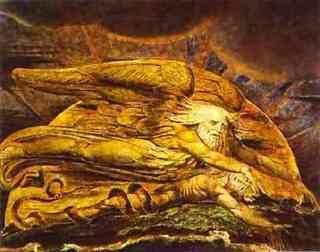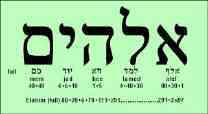 Home
News
Vision
The 7 Phases
Esoteric Evolution
Books
Articles
Related articles
The counterforces
About Margarete
Quotes / Test
Links / Contact
Home
News
Vision
The 7 Phases
Esoteric Evolution
Books
Articles
Related articles
The counterforces
About Margarete
Quotes / Test
Links / Contact
|
Esoteric Evolution - 9The Biblical Story of CreationThe eras of earthly development:
The previous chapter, The Separation of the Sun, relates that the period when the Sun during Hyperborea separated from the combined heavenly body marks the time of which the Book of Genesis of the Bible speaks in the story of the creation. In the current chapter and in a few chapters hereafter we will make a brief excursion to the esoteric backgrounds of the biblical story of creation. We want to show the striking concurrences that exist between the story in the first book of the Bible and esoteric evolution as described by Rudolf Steiner. In his spiritual-scientific work, Rudolf Steiner emphasizes the description of the evolution of humanity and the earth in general. In August 1910, however, he also gave a one-time lecture series specifically about the biblical creation story. These lectures were later published in book form with the title (translated into English): Genesis, Secrets of Creation. Rudolf Steiner explains there that we can also give spiritual content to the concept of evolution, and that we can view the creation story in Genesis in the Bible as a phase in a great cosmic evolutionary process. In this and the next chapter we begin with a general introduction to the subject. Then follows the description of the seven days of creation in the Bible viewed from the perspective of esoteric evolution. Of course, because of its tremendous complexity, this can only be like the lifting of a tip of the veil. Genesis and seershipThe Book of Genesis, Rudolf Steiner says in the above-mentioned lecture series, rests on truth. What is described in it really took place. However, what is described has to be interpreted very differently from the way the creationists do (the creation took place in six days) and modern theologians (Genesis is merely a symbolic story). The author of the Genesis story, says Rudolf Steiner, was a seer. This seer, Moses, was an initiate. As an initiate, he was able spiritually to behold the primordial beginnings of the Earth and the creation of the human being in grand images, and to observe in these the working of high angelic beings that were engaged in this divine work. He stated what he saw in an extremely precise way in the first book of the Bible. Seers or high initiates such as the author of Genesis can spiritually observe and receive such grand and lively images from the primeval times of the earth because, on the one hand, they can free their way of thinking from earthly influences and from pure intellectual thinking that is bound to the physical body. On the other hand, they can do this because they can behold the spiritual world through spiritual organs. Such clairvoyant beholding back to the most remote past is possible because all that has ever become or happened on Earth is "stored" in a kind of cosmic memory. This cosmic memory is called the Akasha Chronicle. It is located in higher regions of the spiritual world. Only high initiates who possess the required spiritual capacities can consult it and interpret the pictures they receive in the right way. The author of the Book of Genesis was such a high initiate. Rudolf Steiner was also. The Old-Hebrew languageIn his lectures about the biblical creation story, Rudolf Steiner relates that it is no coincidence that this grand, almighty document of human existence originally appeared in the old-Hebrew language. The old-Hebrew language was a language that was still so alive that even in its letters it could take up the reality of what the seers were beholding in the realm of the spirit. For this reason, the texts work into the souls of people in an unparallelled way. This was especially true for the pupils in the Hebrew mystery schools that existed long before Christ. When these pupils heard the beginning words of Genesis –B'reshit bara elohim et hashamayim v'et ha'aretz—and let these words work into them, they profoundly touched their soul. As the words were pronounced, in mighty pictures the scenes of the primeval state and creation of the Earth appeared before their inner eye, as the initiated author of Genesis had originally seen them before him—images that touched the mystery pupils to the bottom of their hearts. This is how they could experience the truth that is contained in these texts.
The interpretation out of esoteric ChristianityB'reshit bara elohim et hashamayim v'et ha'aretz is translated in the Revised Standard Version (see Sources) as: In the beginning God created the heavens and the earth. To most people this refers to the physical heaven and earth we are familiar with today. According to Rudolf Steiner, that is not the case. There exist but few documents about human evolution, he said, that because of incorrect translation and interpretation can take us so far away from their true meaning as Genesis, the Bible book that describes the seven days of creation. Why is that? The ElohimWe are leaving the question of what is really meant with the creation of the heavens and he earth for the next few chapters. In this chapter we focus first on another riddle that the sentence B'reshit bara elohim et hashamayim v'et ha'aretz raises right away. How should we, for example, understand the concept of elohim? According to old-Hebrew grammar, Elohim is the plural form of the word Eloah. Eloah is very rarely used in the Hebrew Bible. Both Eloah and Elohim are derived from the designation EL used for spiritual or divine beings in many semitic languages. We recognize EL, for example, in Aramaic Elah or Elaha, the name of the prophet Elijah, and in Arabic Allah. Elohim, the plural form, is translated in Protestant and Catholic bibles as God or Lord, singular therefore. The same is true for the Septuagint, the ancient Greek translation of the Old Testament, where Elohim is translated as Theos, which is singular and means God or Godhead. Theologians and Bible interpreters all over the world have racked their brains to find explanations for the question of why the plural form Elohim was used in the original text, while the verb, bara, is singular and Elohim is virtually everywhere translated as singular.
The Spirits of FormWhat does esoteric Christianity have to say about this? As we saw in the previous chapter, Rudolf Steiner relates that the Elohim are high creative spiritual beings who belong to high angelic hierarchies, so high that you could even call them gods. The Elohim are, however, not identical or equal to God in the sense of the Trinity, or of God-the-Father, as is often assumed. The Elohim about whom the Bible speaks in Genesis encompass a group of seven high creative angelic beings who are in esoteric Christianity also called Spirits of Form. In the New Testament they are also indicated with the name Exousiai or, by St. Paul, Mights. They belong to the sixth hierarchy of creative spiritual beings. Together with the spiritual beings of the still higher hierarchies that stand above them - Seraphim, Cherubim, Thrones, Kyriotetes, and Dynameis - and the hierarchies below them - Archai, Archangels, and Angels - they form the nine heavenly angelic hierarchies. These nine angelic hierarchies are in the service of the Divine Trinity and implement their intentions and creative work. The Divine Trinity - God the Father, God the Son, and God the Holy Spirit - stands far above these angelic hierarchies. It is by order of this far higher divine entity that the Elohim creatively give form to development on Earth. Because they are so highly developed, they may, as was said before, be considered as divine, or as creative gods. But why the singular form? Rudolf Steiner relates that during the creation of the Earth and the human being the seven Elohim or Spirits of Form each contributed creative forces out of their own capacities. At the same time, they worked together in such a harmonious way that they formed a unity. This latter aspect is the reason why in Genesis the Hebrew word bara is singular. In other words, the old-Hebrew text B'reshit bara elohim et hashamayim v'et ha'aretz entirely justifiably uses the term Elohim and the singular form. The Spirit of the ElohimGenesis 1:2 reveals another secret regarding the Elohim. The Revised Standard Version of the Bible reads: "The earth was without form and void;" and then: "… and darkness was upon the face of the deep." But the old-Hebrew text reads: "…ruach elohim m'rachefet 'al p'ne hammajim." If we translate this based on what was said in the previous chapter it would have to be: "The spirit of the Elohim hovered over the water." Who or what is the spirit of the Elohim? That is Christ, the Sun Logos, God the Son. The Sun Logos - the amalgamation of the Sun Spirit and the Logos in Christ - is the leader of the Sun beings, the Elohim, Spiritus of Form, for whom the Sun became their home during Hyperborea. Christ, also called the Word or the Logos, is therefore the actual creator of the heavens and the earth about which the beginning of Genesis speaks. As the Sun Logos, the Godhead, it was he who, as divine Spirit, worked creatively on the earth through the Elohim, and thus led the creation of the Earth and human beings from the beginning. That is what de author of Genesis 1:2 says with the words "…ruach elohim m;rachefet 'al p'ne hammajim."
The Gospel of St. JohnAs we have seen before, there is in the Bible still another seer who comes to the same conclusion. That seer is John, the author of the John Gospel. Just like the author of Genesis, John was also an initiate who could see into the spiritual world. In the introduction to his Gospel, called the Prologue, he relates that everything that exists has come into being, was created, by the Logos or the Word: In the beginning was the Word, and the Word was with God, and the Word was a divine Being. He was in the beginning with God. All things came into being through him, and nothing of all that has come into being was made except through him. (John 1:1-3; Madsen) Somewhat later he writes: And the Word became flesh and lived among us. And we have beheld his revelation, the revelation of the only Son of the Father, full of grace and truth. (John 1:14) Both passages clearly show that John does not consider God the Father, Yahweh or Jehovah as the creator of all that exists, but the Logos, the Word, God the Son, in other words, Christ, the Sun Logos, the Word that later became flesh. SourcesRudolf Steiner: Genesis, Secrets of Creation, CW 122, lectures of August 17 and 18, 1910. Die menschliche Seele in ihre Zusammenhang mit gttlich-geistigen Individualitäten. Die Verinnerlichung der Jahersfeste, GA 224, lecture of May 2, 1923. Lecture not translated into English. The Revised Standard Version (RSV) is a revision published in 1952 of the King James Version of 1611. Both quotations from the John Gospel are from Jon Madsen's rendition of the New Testament that incorporates indications from Rudolf Steiner. Translated by Philip Mees © Margarete van den Brink 2007-2025 - www.margaretevandenbrink.nl
|




 Elohim
Elohim 'Elohim' in Hebrew
'Elohim' in Hebrew



